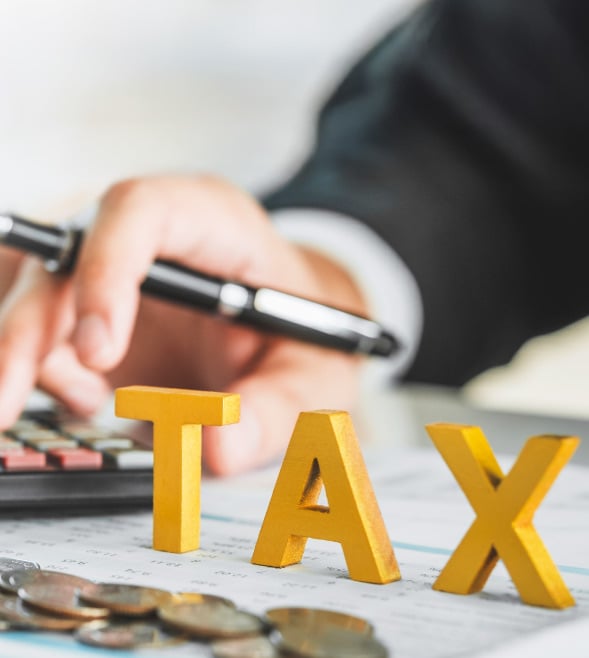-
Business Consulting
Our business consulting specialists offer a comprehensive blend of strategic advisory services. We assess the business, industry, operating model, synergy, skill sets and vision of the organisation and recommend the way forward
-
Digital Natives
Unlock growth with Grant Thornton Bharat's Digital Natives solutions. Customised support for tech-driven companies in healthcare, gaming, and more.
-
New and Emerging Tech
In a world where change is constant, staying ahead means staying adaptable. At Grant Thornton Bharat, we believe the future belongs to those who can evolve quickly, leveraging new and emerging technologies not just as trends, but as strategic levers for transformation.
-
Finance Transformation
Using a holistic approach, integrating digitalisation and digital transformation we help clients achieve transparency, control, governance, and faster decision making through real-time data within the business.
-
Human Capital Consulting
Our Human Capital Consulting team harnesses technology and industry expertise to assist in constructing adaptable organisations with transparency, fostering productive and value-driven workforces, and inspiring employees to engage meaningfully in their tasks.
-
Production Linked Incentive Scheme
Production-linked Incentive Scheme by the Indian government is aimed at boosting manufacturing. Grant Thornton Bharat offers varied services across sectors to help businesses avail of this scheme.
-
Public Sector Advisory
Our Public Sector Advisory team has focused streams, aligned with the core priorities of the Government of India. We are responsible for providing innovative and customized technical and managerial solutions.
-
Tech Advisory
We have amalgamated Digital Transformation, IT Advisory & Information Management and Analytics into a new offering, DigiTech.

-
Direct Tax services
Our tax specialists offer a comprehensive blend of tax services, tax litigation, regulatory and compliance services, helping you navigate through complex business matters.
-
Indirect Tax Services
Get tax services by leading tax firm Grant Thornton India. Our indirect tax services include consulting, compliance and litigation services for corporate, international and transaction tax
-
Transfer Pricing
Our transfer pricing services experts provide a range of services from provision of APA services to handling large global assignments including Country by Country reporting.
-
US Tax
At Grant Thornton, we help individuals and dynamic companies deal with US tax laws, which are one of the most complicated tax legislations across the world.
-
Financial Services - Tax
Best financial consulting services, tailored for small and large businesses by the experts having comprehensive knowledge of domestic laws and access to multifaceted tools to provide a valuable results.
-
Financial Reporting consulting services
Our experts have significant hands-on experience in providing IFRS/US GAAP services, end-to-end solutions and support services to fulfil financial reporting requirements.
-
Fund accounting and financial reporting
International operations often lack standardisation and have varied local reporting formats and requirements. Our experts can offer proactive insights, practical guidance, and positive progress and help meet regulatory timeframes.
-
Compliance and Secretarial Services
Our experts can assist in overhauling the entire compliance machinery of the organisation through evaluation of the applicable statutory obligations, monitoring of adequate governance controls, reporting and providing ongoing support.
-
Global People Solutions
As businesses transcend borders, both domestic and global considerations need equal attention. Our interim CFO and financial controller support services help organisations meet the business vision.
-
Finance and accounting outsourcing
Our accounting experts assist organisations in managing their accounting and reporting. Our dedicated Integrated Knowledge and Capability Centre (IKCC), allows us to service both the domestic and global markets efficiently and cost-effectively
-
Compliance Management System
We have automation solutions for you that will allow meeting government requirements and remain diligent, which when failed, can lead to penalties and loss in revenue.
-
Centres of Excellence
Strategic business hubs for global delivery
-
Global compliance and reporting solutions
At Grant Thornton Bharat, we meet the challenges of our clients and help them unlock their potential for growth. Our professionals offer solutions tailored to meet our clients’ global accounting and statutory reporting requirements. With first-hand experience of local reporting requirements in more than 145+ locations worldwide, we provide seamless and consistent international service delivery through a single point of contact.
-
Related-party transaction governance
Related-party transactions (RPTs) are common in business structures where organisations engage with their group entities, such as holding companies, subsidiaries, associate concerns, joint ventures, or key management personnel, for various operational or financial purposes.
-
Family Offices and Private Client Services
Grant Thornton Bharat Private Client Services offers tailored consulting for family-owned businesses, focusing on governance, compliance, tax, succession planning, and family office structuring to sustain wealth and preserve legacies across generations.
-
Labour codes
Labour codes solutions help you transition through the new legislation. At Grant Thornton, we help businesses divide their approach to make sure a smooth transition.
-
Alerts
At Grant Thornton India, with the help of our tax alerts, we help to provide updates on how to minimise your tax exposure and risks.
-
India investment roadmap
The India Investment Roadmap resource is designed to navigate the complexities of Indian tax and regulatory laws, providing seamless guidance and a comprehensive set of solutions to ensure a smooth process for investors aiming to establish or expand their presence in India.
-
CFO Solutions
Our comprehensive suite of solutions for CFOs

-
Crisis and Resilience
Cyber risks, financial crime and regulatory scrutiny demand strong preparedness. Our forensic team helps organisations build robust crisis and resilience frameworks to protect value and maintain trust.
-
Cyber
In today’s time, businesses have gone through large transformation initiatives such as adoption of digital technologies, transition to cloud, use of advanced technologies et al.
-
ESG consulting
Grant Thornton Bharat offers holistic ESG consulting solutions for sustainable business outcomes. With industry expertise and AI technology, we drive long-term value.
-
Risk analytics
Grant Thornton Bharat’s CLEARR Insights is a state-of-the art data analytics platform that will help you in seamless data analysis and efficient decision-making.
-
Forensic & Investigation Services
The team of forensic consulting services experts consists of the best intelligence corporate experts, and fraud risk, computer forensic experts to deliver most effective solutions to dynamic Indian businesses.
-
Risk Optimisation
Our Governance, Risk and Operations (GRO) services encompass Internal Audit, Enterprise Risk Management, Internal Financial Controls, IT advisory, Standard Operating Procedures and other services.

-
Deal Advisory
Unlike other M&A advisory firm in India, we offer deal advisory services and work exclusively with controlled and well-designed strategies to help businesses grow, expand and create value.
-
Due Diligence
Grant Thornton’s financial due diligence services are aimed at corporate looking for mergers and acquisitions, private equity firms evaluating investments and businesses/promoters considering sale/divestment.
-
Debt & Special Situations Solutions
Grant Thornton Bharat offers specialist debt and special situations consulting services, including restructuring, insolvency, and asset tracing solutions.
-
IPO Services
Grant Thornton Bharat’s IPO services ensure optimal scaling of organisations in the financial markets
-
Transaction Tax Services
Our transaction tax experts understand your business, anticipate your needs and come up with robust tax solutions that help you achieve business objectives ensuring compliance and efficiency
-
Overseas Listing
Overseas listing presents a perfect platform for mid-sized Indian companies with global ambitions. Grant Thornton’s team of experts in listings, work closely with clients during all stages.
-
Valuations
Valuation services are central to every deal lifecycle — from pre-deal strategy to post-transaction integration. Grant Thornton Bharat delivers precise, compliant, and defensible valuations across regulatory, financial reporting, and transaction contexts. Our experts apply deep technical and sector insights to ensure fair value, mitigate risk, and support decision-making for M&A, private equity, litigation, and intangible assets. Every deal begins with the right value — we help you discover it.
-
Financial Reporting Advisory Services
Grant Thornton Bharat Financial Reporting Advisory Services offer end-to-end solutions for complex financial requirements, including GAAP conversions, IPO support, and hedge accounting advisory, ensuring accurate financial reporting and compliance.
-
Financial Statement Audit and Attestation Services
Grant Thornton Bharat offers customised financial statement audit and attestation services, ensuring impeccable quality and compliance with global standards. Our partner-led approach, technical expertise, and market credibility ensure effective solutions for your business needs.

- Agriculture
- Asset management
- Automotive and EV
- Banking
- Education and ed-tech
- Energy & Renewables
- Engineering & industrial products
- Fintech
- FMCG & consumer goods
- Food processing
- Gaming
- Healthcare
- Urban infrastructure
- Insurance
- Media
- Medical devices
- Metals & Mining
- NBFC
- Pharma, bio tech & life sciences
- Real estate and REITs
- Retail & E-commerce
- Specialty chemicals
- Sports
- Technology
- Telecom
- Tourism & hospitality
-
 Thought leadership Co-lending in India: Expanding credit access for MSMEsIn today’s rapidly evolving financial landscape, co-lending has emerged as a key enabler of credit expansion in India, facilitating partnerships between banks and non-banking financial companies (NBFCs) to extend credit more efficiently to underserved segments.
Thought leadership Co-lending in India: Expanding credit access for MSMEsIn today’s rapidly evolving financial landscape, co-lending has emerged as a key enabler of credit expansion in India, facilitating partnerships between banks and non-banking financial companies (NBFCs) to extend credit more efficiently to underserved segments. -
 Article Why India’s financial inclusion journey needs to focus on equity and access to creditFinancial services have expanded over a decade, giving millions access to bank accounts and digital payments. But true empowerment needs to reach every corner of the country if growth is to be long-term and sustained
Article Why India’s financial inclusion journey needs to focus on equity and access to creditFinancial services have expanded over a decade, giving millions access to bank accounts and digital payments. But true empowerment needs to reach every corner of the country if growth is to be long-term and sustained -
 Thought Leadership Competitive and sustainable agriculture & food processing in KeralaThe economy of Kerala is primarily driven by the services sector, which contributes 66% to the Gross State Domestic Product (GSDP).
Thought Leadership Competitive and sustainable agriculture & food processing in KeralaThe economy of Kerala is primarily driven by the services sector, which contributes 66% to the Gross State Domestic Product (GSDP). -
 Article Economic Survey 2024-25: Deregulation, investment and innovation for a Viksit BharatIndia's economic growth remains for a steady trajectory with real GDP expected to grow at 6.4% in FY25 and in the range of 6.3%-6.8% in FY26, reflecting resilience despite global uncertainties.
Article Economic Survey 2024-25: Deregulation, investment and innovation for a Viksit BharatIndia's economic growth remains for a steady trajectory with real GDP expected to grow at 6.4% in FY25 and in the range of 6.3%-6.8% in FY26, reflecting resilience despite global uncertainties.
-
Quarterly Aviation Insights
Explore the latest trends in aviation industry with Grant Thornton Bharat’s Quarterly Aviation Insights. Stay updated on industry growth, market shifts & key developments.

-
Freight Forward: Quarterly insights
Logistics sector in India is adapting to rising costs, global disruptions, and the growing urgency of sustainability.
-
India-UK
India-UK
-
India - Japan
India - Japan

As a foundational pillar of this vision, the GST Council and the Central Board of Indirect Taxes and Customs (CBIC) introduced a landmark reform: GST 2.0. This reimagined framework simplifies the indirect tax regime into a streamlined three-tier structure—5% for essential goods,18% for standard goods and services, and 40% for luxury and sin goods. The reform also phases out the compensation cess, with exceptions maintained for pan masala, tobacco, and related products.
GST 2.0 reaffirms a core economic principle: that simplicity and transparency in taxation are among the most potent catalysts for sustained growth. The reform promises to deliver tangible benefits to both businesses and consumers by fostering a more efficient, equitable, and predictable tax environment.
GST 2.0 marks a pivotal inflection point in India’s industrial evolution.
By addressing long-standing structural inefficiencies, the reform introduces a rationalised tax structure and enhanced input tax credit (ITC) mechanisms— unlocking liquidity, easing cash flow constraints, and improving access to working capital.
By dismantling legacy bottlenecks and streamlining compliance, the new regime empowers manufacturers to scale operations, bolster financial resilience, and sharpen global competitiveness. However, transitional challenges such as ITC reversals, pricing distortions, and litigation risks necessitate strategic foresight and sector-specific agility.
A uniform 18% GST now applies to most vehicles and components— including small cars, hybrids, two wheelers (up to 350cc), three wheelers, ambulances, buses, goods carriers, and auto parts—down from the previous 29–31% (inclusive of cess). This rationalisation reduces acquisition costs, stimulates demand, and resolves classification disputes. Meanwhile, a 40% GST on larger passenger vehicles, SUVs, luxury bikes, and high-capacity hybrids preserves a progressive tax structure aligned with environmental goals. However, the removal of compensation cess has led to stranded ITC worth INR 2,500 crore, prompting the Federation of Automobile Dealers Associations (FADA) to seek redress from the Supreme Court.
The rationalised GST structure aims to enhance affordability, stimulate consumption, and incentivise domestic production. Concessional rates on essentials such as food, beverages, and personal care items help mitigate inflationary pressures. Yet, concerns persist around the disruption of traditional MRP slabs (INR 5, INR 10, INR 20), which may require pricing recalibrations and consumer re-education.
The reform is also expected to boost order volumes, improve capacity utilisation, and enhance competitiveness. A simplified registration process for small suppliers selling via e-commerce platforms lowers entry barriers, enabling informal vendors to formalise and integrate into the structured economy.
Further, in pharma, GST exemptions on 36 essential medicines, a reduced 5% tax on medical devices, and a cut in job work GST from 12% to 5% are poised to lower healthcare costs and improve access - especially in underserved regions. However, the inverted duty structure remains problematic, with inputs and R&D related services being taxed at 18% while finished drugs attract only 5%, leading to ITC accumulation and pricing complexities, particularly in related-party transactions.
In service sector GST reductions on hotel stays, gyms, salons, and yoga services to 5% make wellness and lifestyle offerings more accessible. This not only boosts the hospitality and wellness sectors but also increases disposable income, creating a virtuous cycle of consumption-led growth.
GST 2.0 is a transformative leap in India’s indirect tax architecture. By consolidating tax rates into 5% aand 18% slabs, it eliminates the distortive inverted duty structure that previously hampered domestic value addition.
This rationalisation reduces procurement and logistics costs, particularly with lower GST on cement, air conditioners, and small vehicles. Fleet operators benefit from reduced capital and operational expenses, while the original GST’s removal of interstate checkpoints continues to streamline goods movement across state borders.
A hallmark of GST 2.0 is its digital-first orientation. Automated invoice matching and real-time ITC reconciliation empower businesses to make agile decisions and facilitate seamless inter-state trade. These internal efficiencies help counterbalance external trade frictions, particularly those arising from shifting global dynamics.
GST 2.0 places renewed emphasis on export promotion through several key measures:
- Streamlined refunds & POS reforms: A simplified refund disbursal mechanism and proposed amendments to the Place of Supply (POS) provisions under the IGST Act for intermediary services enhance certainty and competitiveness. This is especially beneficial for Indian Global Capability Centers (GCCs) and IT-enabled services.
- Zero-rated exports: The reaffirmation of zero-rated status for outbound goods and services ensures tax-free exports while preserving full ITC eligibility—enhancing liquidity and pricing power.
- Geopolitical resilience: Amid heightened scrutiny of service exports under US trade policies, GST 2.0 strengthens India’s ability to sustain export volumes and maintain its edge in global value chains.
Together, these reforms foster a more agile, transparent, and globally integrated trade ecosystem— provided they are complemented by investments in logistics, customs modernisation, and trade facilitation.
GST 2.0 is not merely a fiscal adjustment—it is a comprehensive institutional reform. It reflects a maturing cooperative federalism where states play a more active role in shaping tax policy, supported by digital tools that enable real-time revenue tracking and transparent governance.
Key enablers include:
- Ease of Doing Business: Features such as pre-filled returns, automated refunds, and streamlined e-commerce registration significantly enhance compliance and reduce administrative friction.
- Simplified registration scheme: A new fast-track registration process for low risk applicants—processed within three working days using data analytics—is expected to benefit 96% of applicants, according to CBIC estimates.
- Technology integration: The incorporation of AI and blockchain into the GST ecosystem enables real-time invoice authentication and fraud detection, fortifying India’s tax infrastructure against systemic shocks.
- Dispute resolution: The long-awaited establishment of the GST Appellate Tribunal (GSTAT) provides a dedicated second appellate forum, easing the burden on high courts and ensuring faster, more consistent adjudication. Businesses must act swiftly to leverage staggered filing windows for legacy appeals.
GST 2.0 is a landmark reform that simplifies taxation, enhances transparency, and deepens digital integration across India’s economic fabric. By prioritising long-term growth over short-term revenue, it equips India to navigate global volatility with confidence. It is indeed a new era of fiscal maturity.
This article first appeared in the September–October 2025 issue of the IMC Chamber of Commerce and Industry.
Devansh Munjal, Associate Director, Grant Thornton Bharat, has also contributed to this article.





